|
Staff
Reviews 170
Soundoffs 167
News Articles 23
Band Edits + Tags 272
Album Edits 1,063
Album Ratings 543
Objectivity 66%
Last Active 01-01-70 12:00 am
Joined 01-01-70
Review Comments 32,015
| 10 albums of 1960
New series! That I'll probably abandon after a few months like all the others! So here's the deal. I'm choosing 10 albums per year (tx butkuiss) going from 1960 to... wichever year we're on by the time I finish this. Then cycle back and add 10 more, etc. You can rec albums, sure, can't promise I'll get to them but it'll be interesting to see what would be your choices. The criteria for choosing the first 10 is a mix of relevance and personal preference, so no real mystery there. These lists are just to track my progress, share thoughts, etc, so feel free to participate or join me on this trip! | | 1 | 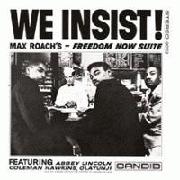 | Max Roach
We Insist! Max Roach's Freedom Now Suite
Candid Records // December, 1960
With a little shake of a tambourine and a dry hit on its skin, Abbey Lincoln inaugurates this musical journey that God knows how far it will take me. "We Insist...!" happens deep within Max Roach's career. A collaborative effort with lyricist Oscar Brown Jr. who is also joined by sax magician Coleman Hawkins, Nigerian percussionist Babatunde Olatunji and some other musicians I can't remember. While I can never get enough of Roach’s drumming, the real star of the show here for me is Lincoln’s singing. She's freedom personified, as her possessed screaming in the infamous “Tryptych” clearly portraits. A brilliant album that represents in a visceral manner a turning point for African culture, slavery, and equal civil rights in a way that was never been experienced before. Essential album. | | 2 | 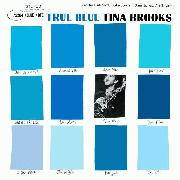 | Tina Brooks
True Blue
Blue Note // December, 1960
As a follow up to We Insist!, and considering I'm not a jazzhead, no matter how many times I've tried to become intimate with the theory and the method, I wanted something that had an entry level feeling while sounding really good, not too flashy (we'll get into Mingus later) but with enough spark to require a focused listening. Tina Brooks' only release during his lifetime was the perfect album for this. Accompanied by Freddie Hubbard, who I was slightly familiar already, Duke Jordan on piano, Art Taylor on drums and Sam Jones on bass, these magnific five really captured something special here. Maybe it doesn't bop as hard as other of its time, but songs like "Theme for Doris", the title track, or the fantastic opener "Good Old Soul" are mighty fine entry points for anyone not familiar with the genre looking for immediate satisfaction. | | 3 |  | Freddie Hubbard
Open Sesame
Blue Note // November, 1960
The obvious choice to follow Brooks' "True Blue" could only be the sister release of Freddie Hubbard's "Open Sesame", which was recorded with almost the same line up of "True Blue" but with a young McCoy Tyner at the keys and Clifford Jarvis on drums. I wouldn't believe that there's anyone capable of not falling for those first notes of the opening track. This album does an incredible job in hooking you right from the start and keeping the mood for, at least, the first half of the album, just until highlight "Gypsy Blue" is steamrolled by the frenzy train that is "All or Nothing At All". I'll admit that the remaining last two tracks after this are less remarkable than the rest, but they still serve as a pretty background for a night walk. | | 4 | 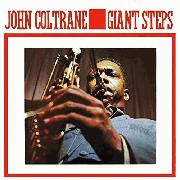 | John Coltrane
Giant Steps
Atlantic // January, 1960
And here it is. There's no escape from Coltrane in any list like this one. It's somewhat natural to slide into this album after Brooks' and Hubbard's. Way more complicated than those two and honestly challenging. Coltrane's speed is not for the faint of heart. And not only he's FAST but he's so ridiculously precise that sometimes it's hard to say these sounds come from a human being making an instrument sing. Yes, he goes harder than anyone else, but also yes, I like Coltrane at his most peaceful and laid back. "Naima", a song for his first wife Juanita Austin, is easily my favorite piece here, no matter how stupidly funny is hearing him shred his instrument in "Countdown" to the beat of an Art Taylor that is on fire here. You can start your Coltrane adventure with "Love Supreme", or you can just pop "Blue Train" and tank his massive catalogue chrono, but I think this album is a good intro to his daunting body of work and inimitable style. | | 5 | 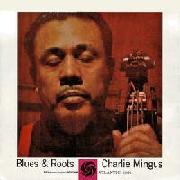 | Charles Mingus
Blues & Roots
Atlantic // March, 1960
And now we get to the PARTY. While previous albums were more or less accomodating in regards to the number of musicians involved in the recording, what Mingus did with "Blues & Roots" escapes me. This is a whole other level. Four sax players, 2 trombones, drums, piano and Mingus' constant yelling to keep everyone in high spirits or simply to let out his contagious euphoria. The album starts strong with "Wednesday Night Prayer" but where things really get silly is with "Moanin'" which i'm pretty sure it'll go down as one of my favourite Mingus' tunes by the time I get more familiar with his catalogue. Hear to believe. | | 6 | 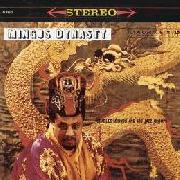 | Charles Mingus
Mingus Dynasty
Columbia // April, 1960
At this point I thought I'd move on from jazz but ignoring a second Mingus release in the same year wouldn't do well with my OCD, not to mention that the prospect of Mingus gone exotic with... Chinese jazz??? made me enter gorilla mode right away. BUT, "Dinasty" wasn't what I expected. It was good, not as good as "Blues & Roots" but up there. And I think part of the reason is that my expectations were set in the sound he creates with "Far Wells, Mill Valley"m but this is the only track that really feels like a whole different dimension to everything I've heard from 1960 so far. Tracks are longer and I found it more demanding than B&R but all in all, "Dinasty" is must-listen if only for that mid-track trip to the far east, | | 7 | 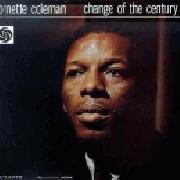 | Ornette Coleman
Change of the Century
Atlantic // June 1960
Now I was really done with jazz and ready to move on to other styles but... wait, is that an Ornette Coleman release? Sandwiched between two of his masterpieces "The Shape of Jazz to Come" and "Free Jazz", this album feels like Coleman knew very clearly where he wanted to go and do but wasn' entirely sure of how. I can't say I enjoyed this album for what it presented but for the challenge that imposed on repeated listens. It felt like trying to adjust a camera focus that keeps blurring the image. The silhouette suggests it's something you want to see clearly but no matter how much you try to fine tune it, you can't get a clear understanding of what's being presented. So right, I still lack the chops to fully assimilate the boundless nature of Coleman's style but it's the pursue of having them what keeps me coming to his albums. Beautiful, isn't it. | | 8 | 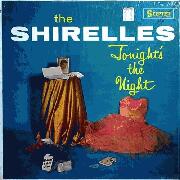 | The Shirelles
Tonight's the Night
Scepter // December, 1960
We're not completely out of jazzland yet but listening to The Shirelles after all the above seems to flow well. Really lovely record, among the first doo-woop albums I've heard and it didn't disappoint, it's just easy to be carried away by these vocal harmonies and swaying swings. The Shirelles' music has been covered widely, including by some young lads in the UK who were just starting to write some songs and felt inspired by the way the Shirelles recorded their vocals. These young lads later formed a band terribly named The Beatles and covered a couple of their tunes, one of them being "Boys" which is included on this record. But the real hit off this would be "Will You Love Me Tomorrow", which accumulates some 91 million plays on streaming. Pretty sure the Shirelles would be able to buy dinner for a whole week with all that streaming money. | | 9 |  | Cliff Richard
Me and My Shadows
Columbia // October 1960
Anto continue with doo-woop that is not Elvis Presley here's his most fevent imitator at the other side of the ocean. This is much a Cliff Richard record as it is a recording of The Shadows, as most of these tracks are composed by Hank Marvin and co., with Richard being credited in only one track and the rest being covers. Authorship aside, Richard has the perfect voice for this, and while the Shadows' style and compositions are pretty straightforward considering what the Beatles would do a few years later, it's a very pleasant record that features a few surprisingly hard bops like "Lamp of Love" and plenty of ballads. You might say Elvis did it better and actually... | | 10 | 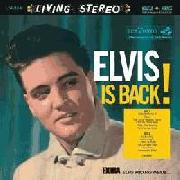 | Elvis Presley
Elvis Is Back!
RCA Victor // April, 1960
Our boy was back from the army and ready to rolll again. Unfortunately, much of the "rock" was left behind in the training trenches. Some say the military tamed him, some say he just matured. Honestly, apart from some scattered songs I had never heard a full album of the King until today and this was probably not the best choice to start with. Production and musicianship are on point, and The Jordanaires make a wonderful job as support vocalists, even Elvis himself sounds great, but the problem is the song selection on this album. Oh my, oh my, so many ballads, so many reprisals of the same damn idea. "Fever" is undoubtedly the highlight here, just hearing Elvis' voice riding solely those bass notes is just a pleasure to the ears, but for the most part, this was pretty bland and inoffensive. Definitely not what I expected. | |
Dewinged
12.11.23 | I'll be adding albums, data, thoughts as I go. I guess it would be nice if I reviewed those which doesn't have a review too huh. | AsleepInTheBack
12.11.23 | I have nothing to teach you but will follow on for the ride
OR (plot twist) if you want something to break up the jazz go for one of the Howlin’ Wolfs for that dirty blues (I assume you have heard but your rating wipe got me dazed dumb and blind etc.) or Phil Ochs / Dylan / Cohen / Jackson C Frank for that FOLK (again, big names, suspect I am preaching to your choir). | Butkuiss
12.11.23 | Per yeat | AsleepInTheBack
12.11.23 | Yeeeeeeet | Dewinged
12.11.23 | I'll probably skip the Dylan catalogue for now, was never a fan, and the blues all around cause it just gets on my nerves a little (big respect for Howlin' Wolf though, the best that did it). For folk I'm leaning more towards the ladies so I might revisit some Joan Baez for this year and will get on some doo wop, surf music, etc for sure. Heard both that Cliff Richards record with the Shadows and one of Brenda Lee but not sure I wanna focus on them for now. Keep'm coming! | Dewinged
12.11.23 | Oh and btw another rule I've set myself for this so I don't go crazy jumping from album to album after one listen is that i actually have to buy a vinyl copy before going for the next album. A rule I'm sure my wife is gonna appreciate . | Ladron93
12.11.23 | Giant Steps is not bad. 8)
I can rec you The Stooges' first album from 1969. | Dewinged
12.11.23 | Thanks, heard it already but will keep it mind when/if I get to 1969! | bighubbabuddha
12.11.23 | blues and roots by Charles Mingus (1960) is a cool listen | JohnnyoftheWell
12.11.23 | uh checkpoints
1961
Django Reinhardt - Djangology
John Coltrane - My Favorite Things
1962
Dick Dale - Surfer's Choice
1964
The Ronettes - ...Presenting the Fabulous Ronettes Featuring Veronica
early Nara Leao
and obvs Getz/Gilberto in the unlikely event you ain't heard
1967
Takeshi Terauchi and the Bunnys - This Is Terauchi Bushi (you need this)
Red Krayola - The Parable of Arable Land | Havey
12.11.23 | joao gilberto - o amor, o sorriso e a flor
booker little - self titled
| Dewinged
12.11.23 | Thanks people, will keep an eye on those. Johnny I heard that Ronettes album not long ago, first choice for 1964 hands down, good recs!
Going deep with Blues & Roots right now. Gonna start writing thoughts later today. | Dewinged
12.13.23 | Three more to go! Feeling like leaving the jazz here and closing up with three entirely different records. These 7 albums were a great start. I've saved Hank Mobley, Donald Byrd, Miles Davis' Sketches from Spain, Eric Dolphy and Art Blakey for a second round, otherwise this'd be all about the jazzzzzz. | DrGonzo1937
12.13.23 | Not heard of these but love the writing dewi | Dewinged
12.13.23 | A bit of mental flexing to get rid of the oxide and corrosion before those aoty blurbs ain't gonna hurt anyone, right doc? ;)
Thank you man, definitely get on the first three at least if you ever feel jazz-adventurous, it's a good time. | DrGonzo1937
12.13.23 | yeah, it's a genre i've overlooked over the years. will definitely check them out | Dewinged
12.13.23 | Definitely don't recommend a crash course like this but an album in between as a palate cleanser, I'd highly recommend it, doc! | budgie
12.13.23 | 1960 wow i didnt know they had music this far back | Dewinged
12.13.23 | Was tempted to start with 1950 but honestly 100 albums of the 50s would have been overkill. | Pangea
12.13.23 | Mingus!! | JohnnyoftheWell
12.13.23 | Mingus Dynasty truthers lfg | Dewinged
12.13.23 | Honestly Diane and Moon Indigo make a good case for Dynasty too, ngl | dedex
12.13.23 | just listen to everything Coltrane did in the 60s and you'll be fine!!!!! | Dewinged
12.13.23 | That's a possibility and it will be on the table next to the one bullet revolver I'll use to blow my brains out if I do! | Dewinged
12.14.23 | j/k I love Coltrane. | Dewinged
12.15.23 | And with Elvis I finish a first incursion into 1960. Pretty interesting year, next 10 albums won't be that evident. I feel like exploring the obscure corners of this year is gonna turn up pretty interesting stuff.
But for now, off to 1961! |
|
